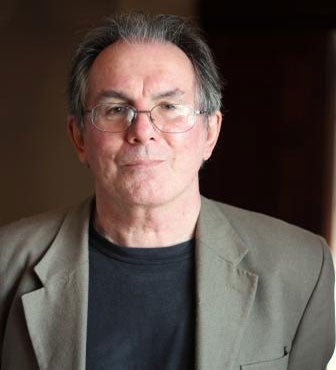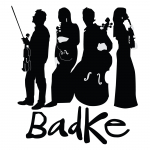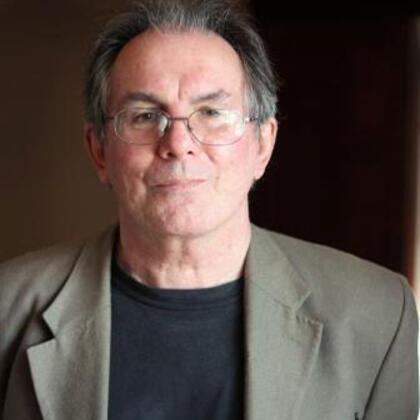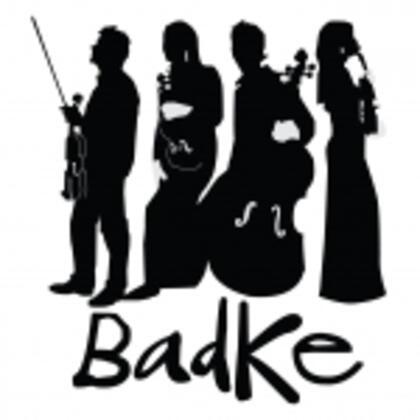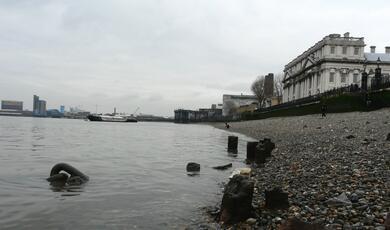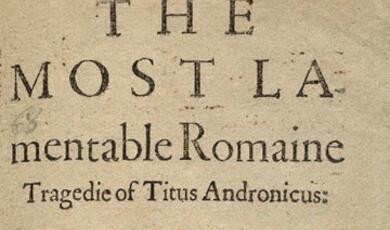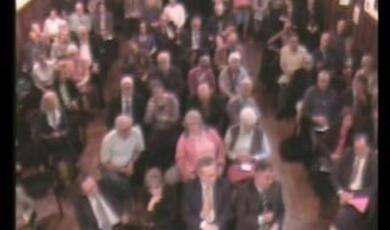Joseph Haydn, Op 76 No 5 in D major
Share
- Details
- Transcript
- Audio
- Downloads
- Extra Reading
Haydn was always an experimenter, and this quartet is one of his most unusual, in that the customary balance between the first two movements is reversed. The first movement is light and undemanding in character (a theme and variations), but is then countered by an extensively developmental slow movement, in the unorthodox (and extremely hard to keep in tune!) key of F sharp major.
Download Transcript
Haydn: Quartet Op. 76 No. 5
Professor Roger Parker
18/3/2010
Today's lecture is about Haydn's Op. 76 No. 5, and with it we come to the last of our three Haydn string quartets, all of them from the Op. 76 collection. In the last lecture, on Op. 76 No. 2, I mentioned something about how Haydn had fared in the two centuries since he wrote these marvellous quartets: how writers and listeners had, during those two centuries, tried to come to terms with him and his music; and also how that coming-to-terms changed with the changing times. For the nineteenth century, that great age of biography, the efforts were hampered by difficulties over what we might (anachronistically) call Haydn's "personality", an area that proved hard to grasp for Romantic sensibilities. While it was easy to paint seductive pictures of bewigged Mozart as the eternal child-genius, and of bad-hair-day Beethoven as titanic and sublime, Haydn seemed, in this period at least, close to being a Man Without Qualities. It was already well known, after all, that for most of his life he had been little more than a loyal servant in an aristocratic household (that of the fabulously wealthy Esterhazy family). When public fame came in the 1790s of Paris and London, he was elderly by the standards of the day...almost a relic from another age. And so the figure emerged of "Papa" Haydn: not a stern patriarch, but something much more homely: the composer of repertoire choral works and a few symphonies and quartets; the man who made the eternal Mozart and the sublime Beethoven possible, but who in the process seemed to fade into the shadows.
As we saw in the last lecture, the twentieth century did much to change this picture, and in many ways caused a fundamental rehabilitation of Haydn. The very lack of romanticized excess expended upon him by the now-despised nineteenth century made it easy to fashion him as a slightly austere musicians' musician: above all a master manipulator of abstract forms, a genius of the sonata principle. He was thus elevated by successive waves of the modernist avant garde, and in the process his symphonies and quartets (now emerging in great profusion) were praised and exhaustively analysed for the intricacy of their motivic and harmonic workings. Instead of old "Papa" Haydn, then, we were given Haydn the progressive, the modernist-icon, the precursor of the twentieth-century's celebration of "pure" musical endeavour. Stravinsky, ever méchant and ever provocative, was a typical composer-champion (Mozart, he said, could be dull in comparison); armies of white-coated musical analysts followed in this path. But amid all this celebration, the Haydn "personality" (again that anachronistic word) again seemed to escape. While popular culture in the early twentieth century took to the Romantic images of Beethoven with huge enthusiasm, and while the later mythologisation of "Amadeus" is something no-one could ignore, Haydn stubbornly remained there on the page, with his wig and pen, somehow still resistant. There is, admittedly, a book called Haydn the Merry Little Peasant; but no-one (thank goodness) made it into a movie.
So: with all this reception history now behind us, and with new biographical information still emerging from the archives, what can we, today, know of Haydn, the "real" Haydn? What's more, how can such knowledge help us understand his music? As I've already said, the very idea of "personality" in our modern sense is anachronistic for a person born, as Haydn was, in 1732. But the composer did have a long life, and it was one in which our notion of "personality" or "identity" was indeed forming. There is also the fact that Haydn had the good fortune to become famous in his own lifetime, thus causing a fair amount of evidence to be preserved about his behaviour and attitudes. Let's delve into this archive for a moment, in particular the period around the mid 1790s when Haydn wrote his Op. 76 quartets. Let's see what it might reveal.
The bare facts of the period are easily related. As mentioned in an earlier lecture, Haydn's decades of gentle servitude in the employ of the Esterhazy family came to an abrupt end in 1790; his patron Prince Nicolaus Esterhazy died and the Prince's son and heir promptly dissolved the musical establishment to which Haydn had devoted so much of his life and creative energies. The faithful composer was given a pension and set adrift. By that time, however, Haydn had-mostly by means of publications of his music, which had spread far and wide-become the most famous living composer in Europe. Freedom from gentle servitude meant he could cash in to this fame, and he did so in no uncertain terms, with lucrative tours to Paris and, twice, to London. In 1795 he returned to Vienna and mostly devoted himself to grand choral works, as befitted his now elevated public station. But he also, and perhaps significantly, made time to write this set of six quartets, and two further quartets for another projected collection: while he seemed content not to write any further symphonies (perhaps the 100-odd he had penned werre enough!), the medium of the string quartet continued to challenge his musical imagination.
To undergo the momentous change from fixed employee to "freelance" musician (something Mozart had famously achieved a decade earlier when he left Salzburg to make his way in Vienna) might seem an obvious test of "character". How did Haydn react? Here's a letter of his, discussing the matter with a devoted female friend:
This little bit of freedom, how sweet it tastes! I had a good prince, but at times I was forced to be dependent on base souls. I have often sighed for release; now I have it in some measure- even though I am burdened with more work, the knowledge that I am not bound to service makes ample amends for all my toil. And yet, dear though this freedom is to me, I long to be in [the new] Prince Esterhazy's service on my return, if only for the sake of my poor family.
This extraordinary wavering-between celebration of freedom and uncertainty about what it might bring economically-was to become a familiar story in the nineteenth century. Composers and other artists frequently hymned their newfound independence, the fact that they were beholden to nobody and could follow their passion where it took them. But many learned that being beholden to nobody meant being without the safety net of fixed employment. As it happened, Haydn had no need to be nervous: his fame protected him, indeed rewarded him in a completely new manner. But we can tell in his tone, with its concern for his "poor family", that he was well aware that freedom might also mean freedom to starve. The ragged artist in the garret, that emerging cliché of the Romantic sensibility, was a potent symbol of the downside of nineteenth-century emancipation.
Was Haydn's caution perhaps symptomatic of something we can also see in his musical personality, something that there he turned to creative effect? A possible illustration of such an equation might be the third movement of our quartet today, its Minuet and Trio. During Haydn's long life, he had written literally hundreds and hundreds of these minuet movements, all with more-or-less the same basic shape and rhythmic cut, even down to the bar-lengths of the various themes and the overall key schemes. The fact that he could return to this comparatively restricted form so often, and even did so late in life, when other genres were opening before him, says something important about his love of order and predictability. But of course there is also the fact that what we might see as constraints were for Haydn also opportunities. Listening to the present Minuet, you can witness how Haydn manages yet again to find originality in the formula. In this case, listen to how an innocent-sounding rhythmic tag at the end of the opening theme of the Minuet (q/q/c) becomes the main topic of the second half of the minuet, stretched out across the quartet's entire range; or how sinister and disquieting the Trio sounds in contrast, with its obsessively rumbling cello and sigh figure in the upper strings. By such means, an unassuming outer form becomes packed with meaning. By such means, 'servitude' can become freedom.
Let's now try another, more difficult route to musical meaning. I mentioned female companions a moment ago, and this aspect of the composer's life risks putting a severe dent in the "Papa Haydn" portrait. He was married fairly early on, in 1760, to the daughter of a wig maker: Maria Anna Aloysia Apollonia Keller. It's possible that Haydn married Maria on the rebound from her sister, as Mozart seems to have done; but we can't be sure. The marriage was (by Haydn's account, which is all we have; Maria left very few traces) far from happy. The composer's explanation, as reported by his biographer Griesinger, was strange, reminding us of the distance between eighteenth-century ideas of marriage and our own. His analysis was that Maria could not have children, and that this circumstance made him "less indifferent to the charms of other women". The meaning here is obscure. Was he punishinghis wife for not supplying him with heirs? If so, he was hardly the first to do so, although that circumstance would do little to excuse him.
Whatever the circumstances, there were extra-marital affairs, possibly on both sides. In the 1780s, Haydn became much enamoured of an Italian singer called Luigia Polzelli, a relationship that involved many transfers of cash from him to her, and that faded only a decade later when, in London, he seems to have fallen for an English widow called Rebecca Schroeter. There are traces of the sentimental nature of this latter (and possibly last) affair in their correspondence; but again the evidence is frustratingly fragmentary and inconclusive. Here's an example of a letter from Schroeter to Haydn, copied out by the aging composer at a later date, possibly when she asked for the return of her correspondence:
My Dear: I was extremely sorry to hear this morning that you were indisposed, I am told you was five hours at your Study's yesterday. Indeed my Dear Love: I am afraid it will hurt you. Why should you who have already produced so many WONDERFUL and CHARMING compositions, still fatigue yourself with such close application.
And there's plenty more where that came from. A sad coda to these sentimental attachments came in 1800, when Haydn's wife, whose health had long been at a low ebb, finally died. Luigia Polzelli was living in Vienna, and saw fit to remind Haydn of the promises of undying affection he had once made to her. By that stage, though, the composer was reaching his seventieth year and had no appetite for remarriage. Polzelli did, though, manage to make him sign a bizarre document, written in what seems to be painfully homemade legalese:
I, the undersigned, promise Signora Luigia Polzelli, in case I should marry again, to take nobody else for wife other than the above-mentioned Luigia Polzelli; and if I remain a widower, I promise the above-mentioned Luigia Polzelli after my death a pension of three hundred florins in Vienna currency for so long as she lives.
It was signed, "Joseph Haydn. Maestro di Cappella to his Highness the Prince Esterhazy". It is with documents such as these that we must piece together shards of Haydn's emotional existence, and they won't take us too far. As I said a moment ago, they do little more than expose the rifts between us and a society in which marriage was fundamentally an economic alliance.
Can we get further by contemplating Haydn's music? Well, yes and no; it depends greatly on our powers of sympathy and, let's be frank, of invention. As it happens, though, one of the best places to start such contemplations might be with the second, slow movement of today's quartet, which is one of his weightiest and most modern in terms of its emotional appeal. Set in the highly unusual key of F# major, which gives a strange, unearthly sonority, it is marked "Largo. Cantabile e mesto": in a singing style and sad. It starts, and mostly continues, as a solo for the first violin, a solo that in spite of the major mode sings out with aching sadness, sometimes supplanted by equally heartfelt solos from the other three instruments, sometimes in tender duets with the second violin, perhaps ghostly reminiscences of the old Baroque trio-sonata textures that were now such a distant memory. This much is clear. But the difficult, the impossible question is: we know, we are told that this is a song without words, but do words lurk behind the sentiments? Is Haydn, now near the end of his long composing life, telling us something of his feelings, the tenderness he has felt and is now without?
One thing is sure. In spite of the unusual colours and emotions (and they are truly unusual) presented in this magnificent slow movement, its surroundings in the other three movements of Op. 76, No. 5 bear almost no resonance of the same mood. We've talked a little about the Minuet and Trio; the two outer moments are as extrovert as any in Haydn, revealing once again that the string quartet, which had started life in the mid eighteenth century as a restrained, domestic medium, was by this period fifty years later becoming capable of grand, almost symphonic gestures. The first movement seems almost to describe this progress, this upward mobility of status and reach. It begins in a very simple, "character piece" style, with stately, well-behaved four part harmony and a cheerful, rocking 6/8 melody that is soon decorated with playful, quasi-improvised variations. This mood is maintained for some time, but is periodically interrupted by ever more extravagant bursts of sound. Finally the movement segues into a driving Allegro, full of fugal devices and ever more insistent repeated-note figures, generating more and more volume. The end is a burst of double stopping, as near to orchestral grandeur as a quartet could reach.
The last movement seems to take up this mood immediately. It starts with a burst of frenetic cadences, a typical Haydn reversal of expectations. The driving mood is maintained throughout, with rapidly repeated open fifths and narrow-compass melodies plainly referring to a folk-like origin, one that many have seen as joyous recreations of the Hungarian-influenced music Haydn would have heard at the Esterhazy court and in the cosmopolitan streets of Vienna. The sheer virtuosity of it all is remarkable and the ceaseless energy seems more like an anticipation of a Mendelssohnian scherzo than anything from the last years of the eighteenth century. What is more, this is emphatically music for professionals, and professionals of a very high order: musicians who can negotiate the extremes of their instruments- range, both physical and emotional.
Haydn's life after he unleashed Op. 76 was, perhaps inevitably for one who lived so long, not without shadows. There were a few more years in the sun, with grand choral works such as The Seasons and The Creationcrowning his public achievements. But as the century turned and he reached his 70s the vitality that had sustained him, the ceaseless energy and invention that had brought those hundreds of works into being, inevitably wore down. Composing had been and remained a regular fixture in his always regimented life: up at 6:30 or earlier; pupils' work then heard and strictly corrected (one senses that being taught by Haydn was an acquired taste, and not just because of the 7:00am trial by piano; no wonder the young Beethoven tried it and then took his counterpoint elsewhere). Haydn was then unfailingly at his desk and composing by 8:00, and continued thus through most of the day. But, just a few years into the nineteenth century, his muse deserted him. In one letter to a publisher he poured out his woes:
Every day the world compliments me on the fire of my recent works, but no one will believe the strain and effort it costs me to produce them. Some days my enfeebled memory and the unstrung state of my nerves crush me to the earth to such an extent that I fall prey to the worst sort of depression, and am quite incapable of finding even a single idea for many days thereafter; until at last Providence revives me, and I can again sit down at the pianoforte and begin to scratch away.
What is more, and with good reason, he became alarmed by the tumultuous changes taking place in Europe after the French Revolution, in particular the ensuing Napoleonic adventures. His most famous melody was a Hymn to the Austrian Emperor, an inspiration that he included in No. 3 of the Op. 76 set as the basis of a theme and variations; in extreme old age, as Vienna was threatened by Napoleon's armies, he took what pleasure he could from playing it daily to himself on the piano.
Eventually it came time for last thoughts: Haydn died in 1809. His will had, as befitted a man of such wealth and standing, been through many drafts. Its details, though, give as good a picture as any of the man. Numerous family member were looked after, as were a whole host of working people with whom he had been in contact: his death benefitted a shoemaker, a blacksmith, a saddler's widow and many, many more. Many female companions, whether sentimentally tied or not, were recalled and provided for. It may, though, perhaps cheer some of us to note one clause: "I hereby revoke the obligation in Italian, signed by me, which may be produced by Madame Polzelli; otherwise so many of my poor relations with greater claims would receive too little". Instead he left her 150 florins a year, and instructed that after her death half of the amount thus saved was to be spent on the maintenance of a monument-a monument to, of all people, one Joseph Haydn.
Haydn's concern about posterity was typical of his age, one in which no-one could be sure that music, that most transient of arts, would long outlive its composer. He could not have suspected that, more than two hundred years after they were written, compositions such as his Op. 76 string quartets would be still played, indeed would be close to the centre of the repertory for that ensemble. Here to remind us again of this, his greatest legacy, are the Badke Quartet. Illness has struck down one of their number, but the larger community of professional string quartets has come to the rescue. Please join me in welcoming them: Heather Badke, first violin; Hanna Dawson (of the Sacconi String Quartet), second violin; Jon Thorne, viola; and Jonathan Byers, cello.
Badke Quartet plays
Haydn's Quartet Op. 76, No. 5
©Professor Roger Parker, Gresham College 2010
Part of:
This event was on Thu, 18 Mar 2010
Support Gresham
Gresham College has offered an outstanding education to the public free of charge for over 400 years. Today, Gresham plays an important role in fostering a love of learning and a greater understanding of ourselves and the world around us. Your donation will help to widen our reach and to broaden our audience, allowing more people to benefit from a high-quality education from some of the brightest minds.


 Login
Login




